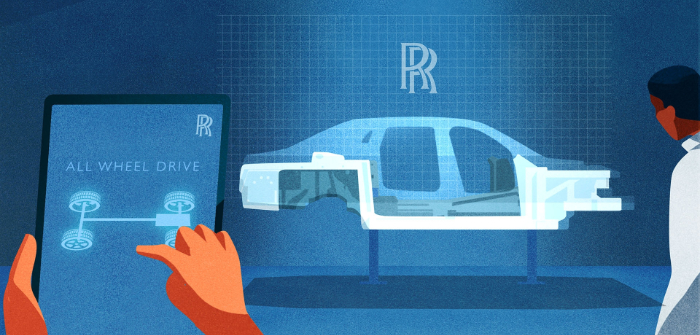Rolls-Royce has given a rare insight into the engineering and testing demands its development team face while refining the marque’s second-generation Ghost, set to be fully unveiled in the coming weeks.
In a video update, the luxury brand explains how the new model update will switch to all-wheel drive and gives details of the car’s suspension set-up, famed in previous Rolls-Royce models for providing a smooth driving experience.
The company explained that the first Ghost, revealed in 2009, answered customer demands for a car able to offer an impeccable chauffeur-driven experience as well as a vibrant dynamic personality when they chose to drive it themselves. This collective of business leaders, founders and entrepreneurs were apparently unanimous in their feedback that the marque had created a product that balanced their requests perfectly.
Rolls-Royce said that these clients, on hearing of a successor to the Ghost model, wanted the brand to deliver a car that they could use even more; something even more refined to be driven in and even more enjoyable to drive. To fulfil this challenging brief, Rolls-Royce’s engineering experts rejected the use of a pre-existing platform, instead configuring the marque’s proprietary spaceframe architecture to incorporate elements of the existing model portfolio, such as all-wheel drive and all-wheel steering, while adapting the structure to accommodate significant advances in Rolls-Royce’s hallmark ride and dynamic abilities.
A key development, Rolls-Royce said, is the Planar system, comprising three elements. The first is an Upper Wishbone Damper unit, which is mounted above the front suspension assembly and creates an even more stable and effortless ride. The result of three years of development, this is said by Rolls-Royce to be a world-first technology.
The second is the Flagbearer system, which uses cameras to read the road ahead and prepare the suspension system for any changes in road surface. The third is Satellite Aided Transmission, which draws GPS data to pre-select the optimum gear for upcoming corners. The Planar system allows the new Ghost to anticipate and react to even the most demanding road surface.
During the engineering design process, the new Ghost’s chassis and suspension specialists were tasked with regularly presenting the technical advances they had made to other departments, as well as showcasing how these remarkable developments met the client brief. Rolls-Royce has elected to share elements of these internal briefings to demonstrate the engineering substance that underpins this extraordinary new motor car ahead of its official unveiling in the autumn.
New Ghost engineering lead Jonathan Simms said, “Ghost clients told us that it’s the car in their collection that they’re drawn to the most. They love its uncomplicated versatility. It’s not trying to be a sports car, it’s not trying to be a grand statement – it’s simply exceptional and exceptionally simple.
“When it came to creating a new Ghost – one that outshines its incredibly capable predecessor – the engineering team had to start from scratch. We pushed our architecture even further and created a car even more dynamic, even more luxurious and, most of all, even more effortlessly useable.”
The marque chose the medium of animated illustrations to convey these insights. Rendered first by renowned illustrator Charlie Davis, they cohesively and beautifully represent these findings in a fashion that befits the new Ghost.


